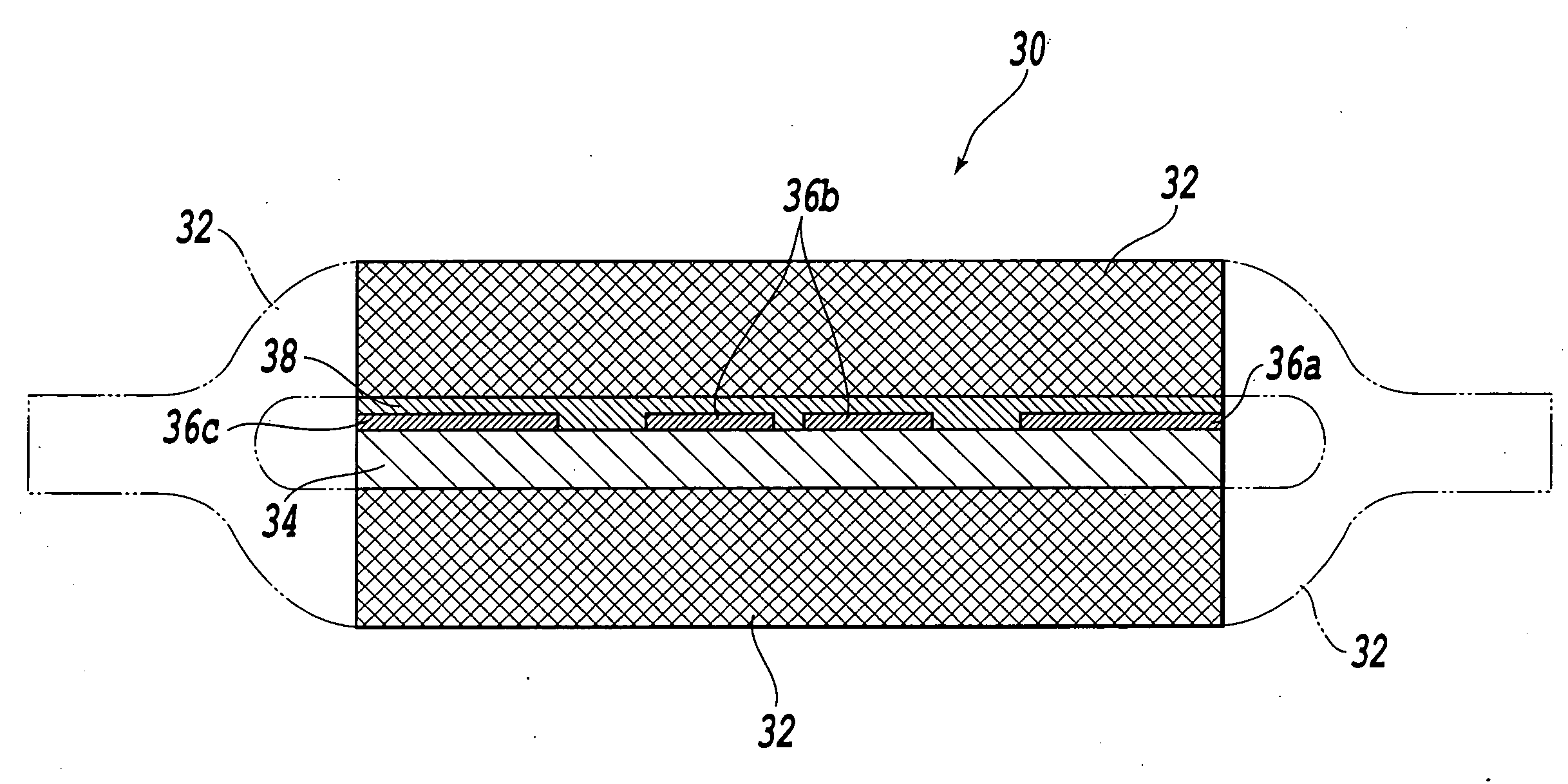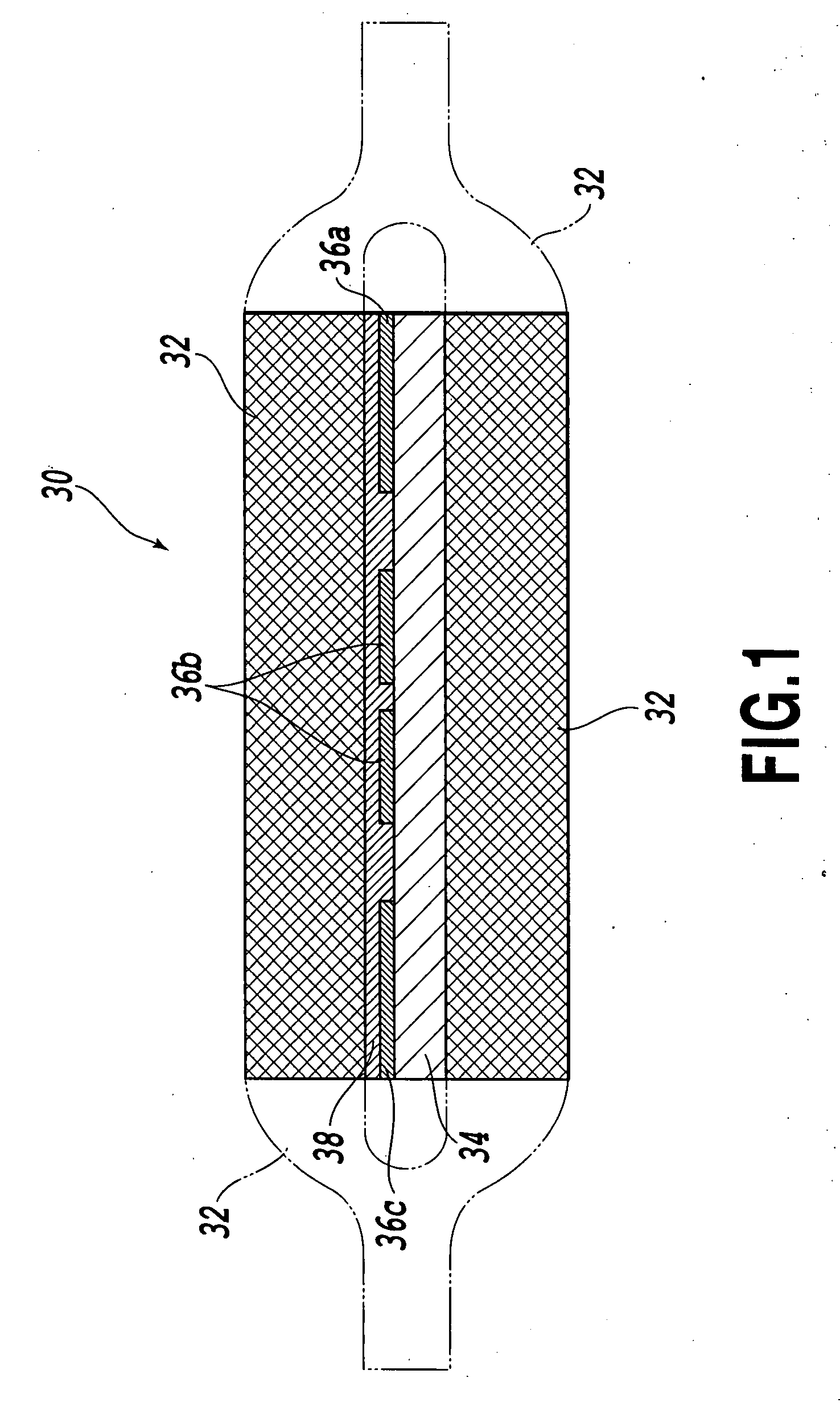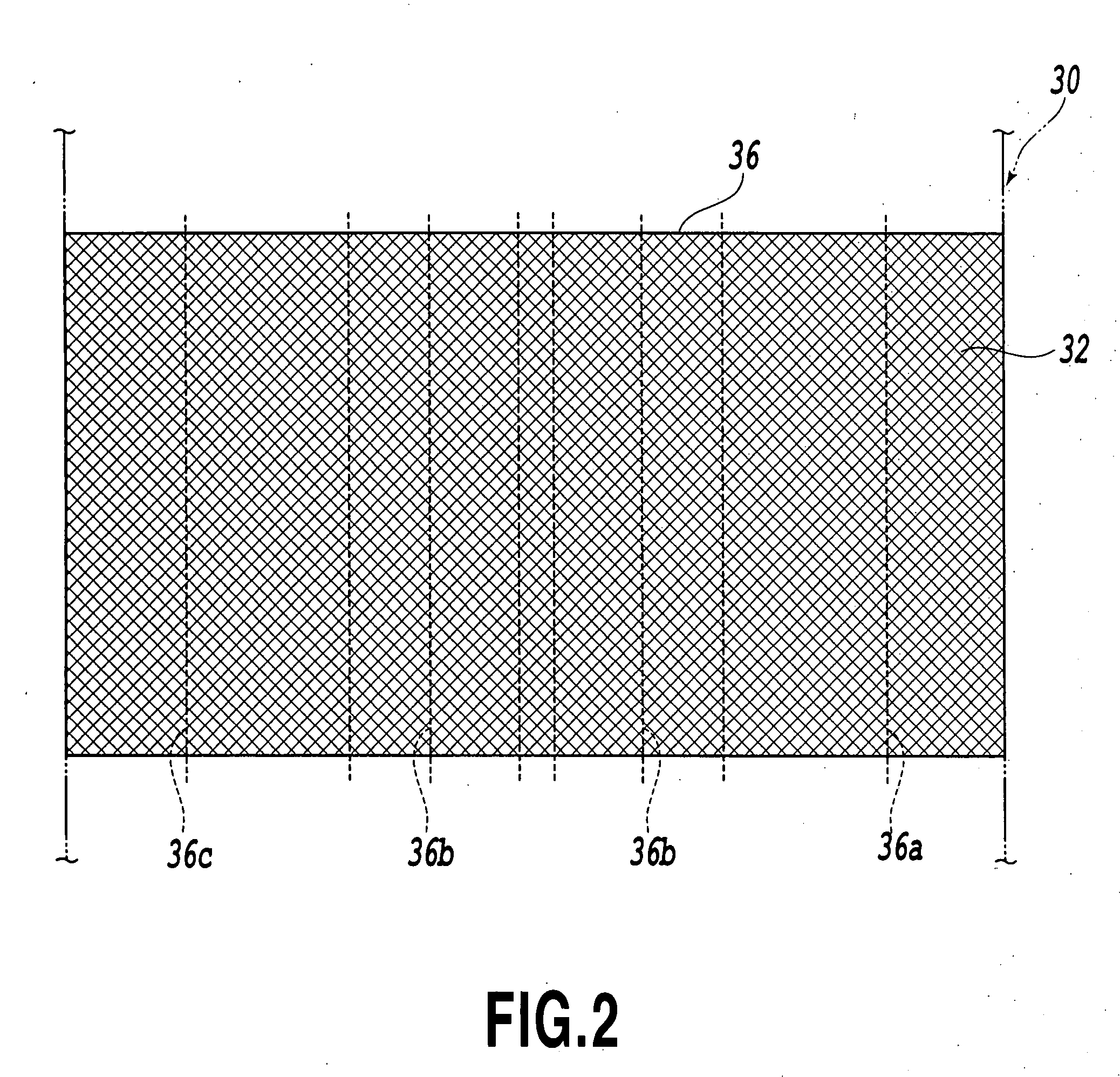Flexible printed circuit board
a printed circuit board and flexible technology, applied in the direction of dielectric characteristics, high frequency circuit adaptations, electrical apparatus construction details, etc., can solve the problems of increased transmission loss, difficult transmission of signals at high frequency bands, increased transmission loss, etc., to increase conductive resistance and increase transmission loss
- Summary
- Abstract
- Description
- Claims
- Application Information
AI Technical Summary
Benefits of technology
Problems solved by technology
Method used
Image
Examples
first embodiment
[0029]FIGS. 1 and 2 illustrate a main part of a flexible printed circuit board according to the present invention.
[0030]In FIG. 1, the flexible printed circuit board 30 includes an insulative substrate 34 having a plurality of conductive layers 36a, 36b and 36c covered with a protective layer 38 on one surface, and a mesh-cloth member 32 which is a reticulate covering member encircling all of the protective layer 38 and the insulative substrate 34. Note in FIGS. 1 and 2, a part of the flexible printed circuit board 30 having a predetermined length is illustrated in enlarged dimension.
[0031]The insulative substrate 34 is molded, for example, with glass-epoxy resin, liquid crystal polymer or others to be approximately 50 μm thick. On the other hand, the plurality of conductive layers 36a, 36b and 36c are formed of copper alloy by a known pattern-forming technique. Two conductive layers 36b extend generally parallel to each other vertical to a paper surface and form signal lines. The c...
second embodiment
[0058]FIG. 3A illustrates a main part of a flexible printed circuit board according to the present invention.
[0059]A flexible printed circuit board 40 shown in FIG. 3A has metallic covering layers 42A and 42B of a predetermined thickness on the outer circumference of the mesh-cloth members 32 of the flexible printed circuit board 30 shown in FIG. 1, in addition thereto.
[0060]In FIG. 3A, the same reference numerals are used for designating the same constituent elements as in FIG. 1, and the explanation thereof will be eliminated.
[0061]The metallic covering layers 42A and 42B are formed of a copper tape having adhesive on one surface of copper foil of 10 μm thick or an aluminum tape having adhesive on one surface of aluminum foil of 10 μm thick, while taking a skin effect into consideration.
[0062]Ends of the covering layers 42A and 42B in the extending direction of the ground conductive layers 36a and 36c are respectively connected to ends of the latter not shown. In this regard, it i...
PUM
| Property | Measurement | Unit |
|---|---|---|
| relative dielectric constant | aaaaa | aaaaa |
| porosity | aaaaa | aaaaa |
| thickness | aaaaa | aaaaa |
Abstract
Description
Claims
Application Information
 Login to View More
Login to View More - R&D
- Intellectual Property
- Life Sciences
- Materials
- Tech Scout
- Unparalleled Data Quality
- Higher Quality Content
- 60% Fewer Hallucinations
Browse by: Latest US Patents, China's latest patents, Technical Efficacy Thesaurus, Application Domain, Technology Topic, Popular Technical Reports.
© 2025 PatSnap. All rights reserved.Legal|Privacy policy|Modern Slavery Act Transparency Statement|Sitemap|About US| Contact US: help@patsnap.com



